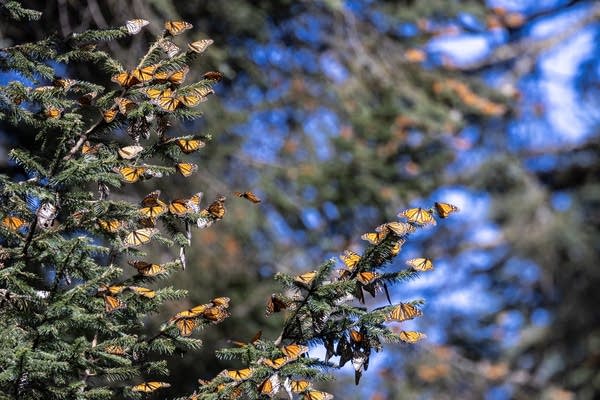Wintering monarch butterfly population hit hard by drought

Wintering monarch butterflies in Mexico in January 2024.
Courtesy of Court Whelan Photography
Go Deeper.
Create an account or log in to save stories.
Like this?
Thanks for liking this story! We have added it to a list of your favorite stories.


